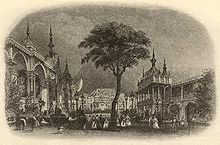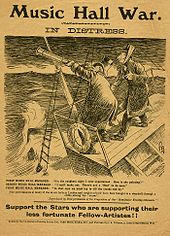The music hall is a sort of British dramatic amusement that was prominent from the early Victorian period around 1850 and enduring until 1960. It included a blend of well-known melodies, comic drama, claim to fame acts, and assortment excitement. The term is borrowed from a sort of theatre or scene in which such stimulation occurred. English music hall was like American vaudeville, highlighting awakening tunes and comic acts.
History of Victorian Music Halls
The term is borrowed from a sort of theatre or scene in which such stimulation occurred. English music hall was like American vaudeville, highlighting awakening tunes and comic acts. Plain centre of the whole music hall industry would exist here. Students of history have contended that the music halls were the principal business mass amusement to show up in Britain, they spoke to everybody. In a world that was exclusively orientated along class and sex lines, the music halls were a place that attracted people, old and youthful, from varying backgrounds.
Pioneers of Victorian Music Halls
The Canterbury Music Hall was the first of these, opening in 1852, and after that again in 1856, after a noteworthy revamp to expand seating limit. Morton assembled this hall at 143 Westminster Bridge Road, and it flagged the new style of stimulation, particularly for the regular workers, in the heart of London. Extravagant plans and exteriors had a place with the individuals who could bear to have them at home, not simply for joy.
One of the most fabulous of these new halls was the Coliseum Theatre worked by Oswald Stoll in 1904 at the base of St. Martin’s Lane. This was trailed by the London Palladium (1910) in Little Argyll Street.

Music War
By the latter half of the nineteenth century, there were more than 300 music halls authorized in London alone. Syndicated bunches started to show up, opening music halls in towns and resorts the nation over, and later the world. The improvement of syndicates controlling various theatres, for example, the Stoll circuit, expanded pressures amongst representatives and managers. On 22 January 1907, a debate among specialists, arrange hands and administrators of the Holborn Empire intensified.
Strikes in other London and rural lobbies took after, sorted out by the Variety Artistes’ Federation. The strike went on for right around two weeks and was known as the Music Hall War. A few music hall performers, for example, Marie Dainton, Marie Lloyd, Arthur Roberts, Joe Elvin and Gus Elen were solid promoters of the strike; however, they themselves sufficiently earned not to be concerned actually in a material sense.

Music hall amid the interwar period, was the single prevailing type of mainstream excitement in Britain. The change of silver screen, the improvement of radio, and the debasing of the gramophone harmed its notoriety extraordinarily.